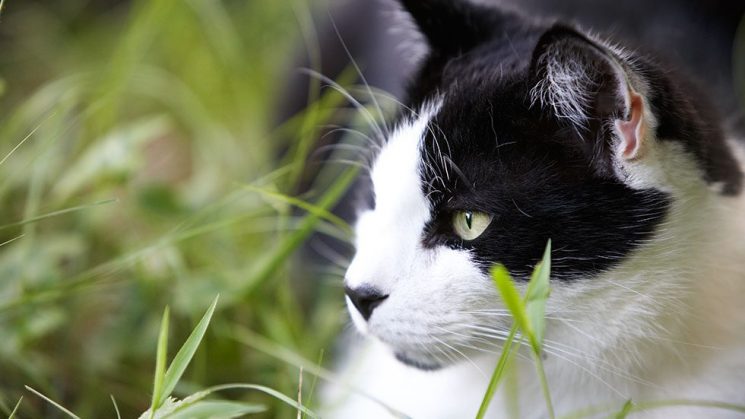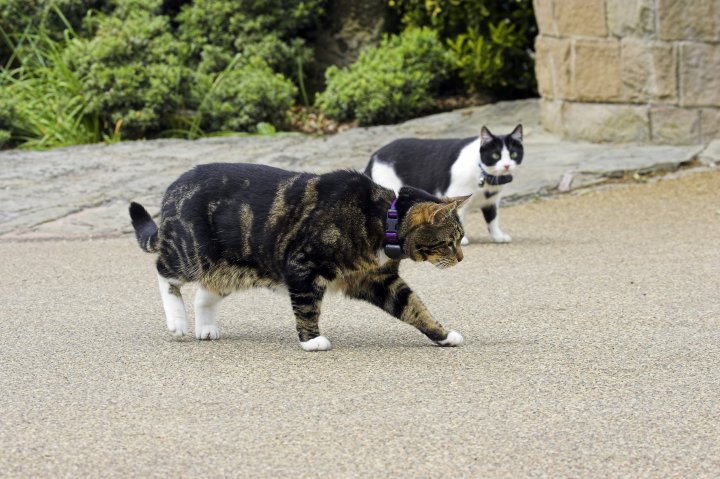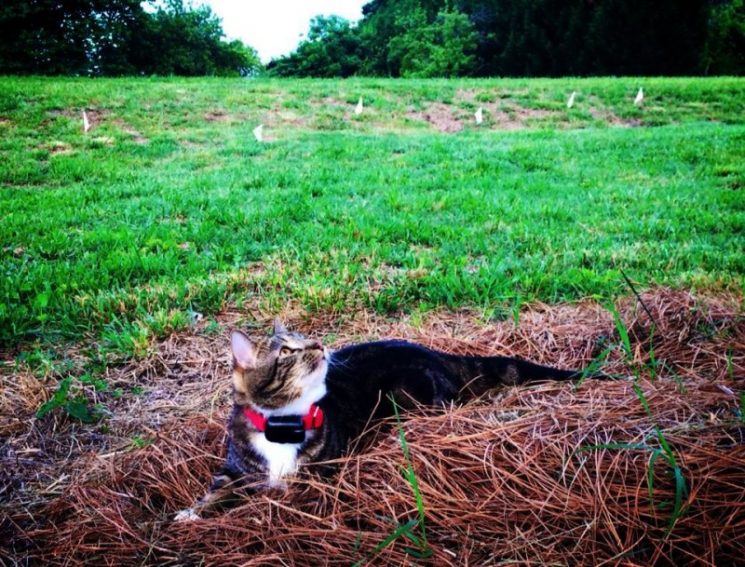By Fort Point, September 9, 2016

New UK Study on the Impact of Hidden Fences on Cats
Our name may be DogWatch, but thousands of cats worldwide also use our hidden fences to explore the outdoors safely. Giving their cat the freedom to roam outdoors is important for many cat owners, but it brings with it many challenges, including keeping cats away from roads and other hazards and preventing their natural prey drive from impacting local wildlife populations. Outdoor cats are particularly common in the United Kingdom (UK), where animal behaviorists recently announced the findings of a new study on the impact of hidden fences on cat behavior and welfare.
In an article published in the science journal PLOS ONE on September 7, 2016, a team of animal behavior researchers from the University of Lincoln in the UK studied the effects of long-term exposure to an electronic containment system (such as a DogWatch Hidden Fence) on the behavior and welfare of pet cats. Groups in the UK have challenged the practice of containing cats using hidden or “invisible” fences over concerns about the potential impact on the cats’ welfare. Supporters of electronic pet containment argue that hidden fences are an important tool to help prevent the high number of cats injuries and fatalities caused by auto accidents.

The team from University of Lincoln recruited 46 cats for this study. The cats were separated into two groups: the test group, which included 23 cats who had been trained on an outdoor electronic pet containment system for at least 12 months, and the control group, which included 23 cats who had access to the outdoors with no electronic containment system in place.
The researchers assessed the cats’ behavior and welfare by administrating four tests — for example, measuring their reactions to new people, unfamiliar objects and sudden noises — as well as examining a questionnaire filled out by the cats’ owner. The article concluded with the following findings:
We recorded a range of different measures, from the cat itself as well as indirect observations obtained via the cat’s owner, in order to investigate the potential long-term impact of an invisible electronic containment system on cat behaviour and welfare. Taken together, the findings do not suggest that long-term (at least 12 months) exposure to the system had a significant negative impact on the behaviour and welfare of contained cats. Indeed cats subject to electronic confinement appear to be less neophobic¹ than unrestrained cats…Owner report and the behavioural and judgment bias tests found no evidence of a difference in the general anxiety of the two populations of cats studied…current evidence, reported here, indicates that these systems have the potential to reduce roaming by cats and its consequential risks without causing long term distress.
The study was funded jointly by the University of Lincoln and Feline Friends, a UK-based animal welfare charity.
Professor Daniel Mills, Professor of Veterinary Behavioral Medicine in the School of Life Sciences at the University of Lincoln and co-author of the study, says: “While some will argue that electronic containment systems can never be justified for pets, others highlight that, in the UK alone, tens of thousands of cats are killed and injured on roads each year and these devices can prevent these often fatal injuries and the emotional cost to the cats and their owners. In contrast, housing cats solely indoors to remove such risks is associated with increased prevalence of a range of health problems including obesity, Feline Urologic Syndrome and dental disease. Long-term exposure to common flame retardants widely used in homes may also have toxic side effects for cats.”
“This work is an important first step in studying these electronic containment systems,” says lead researcher Dr. Naïma Kasbaoui, Mills’ colleague and co-author. “Further work is now needed to explore the effects on cats kept in smaller enclosures, but our results should help reassure many owners looking to keep their cats safe from roads using these containment systems.”
Read the full text of the article on PLOS ONE’s website.

For more information about hidden fences training for cats (and other animals), check out out previous post: Pet Containment and Training for Cats, Pigs, Goats and Horses, too!
¹ Neophobia is the fear of new things.